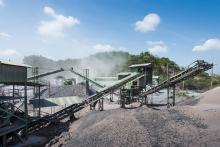Researchers in Switzerland, India and Cuba are said to have come together to develop limestone calcined clay cement (LC3) which will help reduce carbon dioxide emission (CO2) by almost 30%.
It is reported that the research aided by the Swiss government is a new blend which substitutes up to half of the carbon intensive materials traditionally used to make cement.
“The LC3 project is an example of scientific and technical collaboration between Switzerland and India. The innovative cement production process on which these institutions are working is of great economic and environmental significance,” Switzerland Ambassador Linus von Castelmur told www.bignewsnetwork.
The LC3 is a synergetic hydration of clinker (a dark grey nodular material made by heating ground limestone and clay at a temperature of about 1,400-1,500ºC), calcined clay and crushed limestone to achieve the performance required from commercial cements, with clinker factors as low as 0.40.
It is also said that the raw materials are easily available in many of parts of India and Cuba.
Having completed the first phase, it is claimed the new cement also has lower processing and capital investment, which can be economically favourable to standard cement production.
India is the second largest producer of cement, which is said to account for around 8% of the country's industrial carbon dioxide emissions.
“The testing and application phase is over, now it has to pass through standardisation committee before it is accepted by the industries. The research which has been done will not be a patent protected but available to everyone,” said Castelmur.
The project is costing around US$4.3 million and has researchers from Federal Institute of Technology, Lausanne (Switzerland); Indian Institute of Technology (IIT) Delhi, Mumbai, Chennai (India), and Technology and Action for Rural Advancement.









